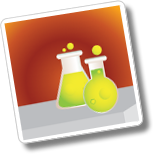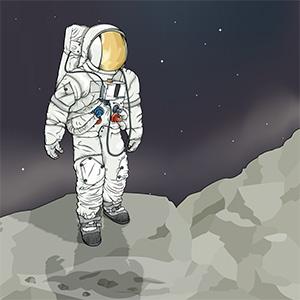Space & Earth Science!
Did you know that science experiments and laboratory research can be done ANYWHERE?
At the National Institute of Environmental Health Sciences (NIEHS) we study the effects of the environment on health in laboratories located in the Research Triangle Park, North Carolina. But scientists can be found anywhere at anytime, and their laboratories could even be on the moon! Both earth and space science help us learn more about our planet's environment and how it contributes to our personal health and welfare. The discoveries from space and earth science missions engage our imaginations and encourage students to consider exciting careers in science, health, and the environment. You can learn about how the National Aeronautics and Space Administration (NASA) studies the environment from global perspectives by visiting their Science at NASA, and Space Science websites! And the following websites!
NASA World Wind and the Moon
Check out the new NASA interactive website that allows you to browse Clementine moon data with full 3D terrain.
Space Place
Another NASA site for grade school children that demonstrates and explains scientific concepts related to astronomy in a fun, hands-on manner! Learn about such topics as stars, the earth, ions, and interferometry by baking cookies, navigating a maze, and solving space riddles.
A NOAA site with science news and information about the Sun-Earth environment; provides current "weather" status on our Solar System, plus a lot of good information about sunspots, solar flares, borealis and more!
Space Sciences Laboratory
The Space Sciences Laboratory at Berkeley was initiated in 1958 with a primary goal of fostering outstanding research in space-related sciences and providing education for the next generation of space scientists. Their website includes a screen saver that does radio telescope analysis for SETI along with other great information about space science.
Now, be sure to learn more about our moon and its phases below.
Our Moon's Lunar Phases!
Note: The diagrams on these pages are shown as the moon would appear when viewed by people in the northern hemisphere. If you are viewing the moon from the southern hemisphere, it would be illuminated from the other side (i.e. the waxing moon would be illuminated on the LEFT.)
Why Do We See the Moon in "Phases"?
The large moons shown below represent what we see from earth during each phase of the moon.
The line passing through each small moon shows the half which faces the earth.
Lunar Phase Simulator from the University of Nebraska-Lincoln






